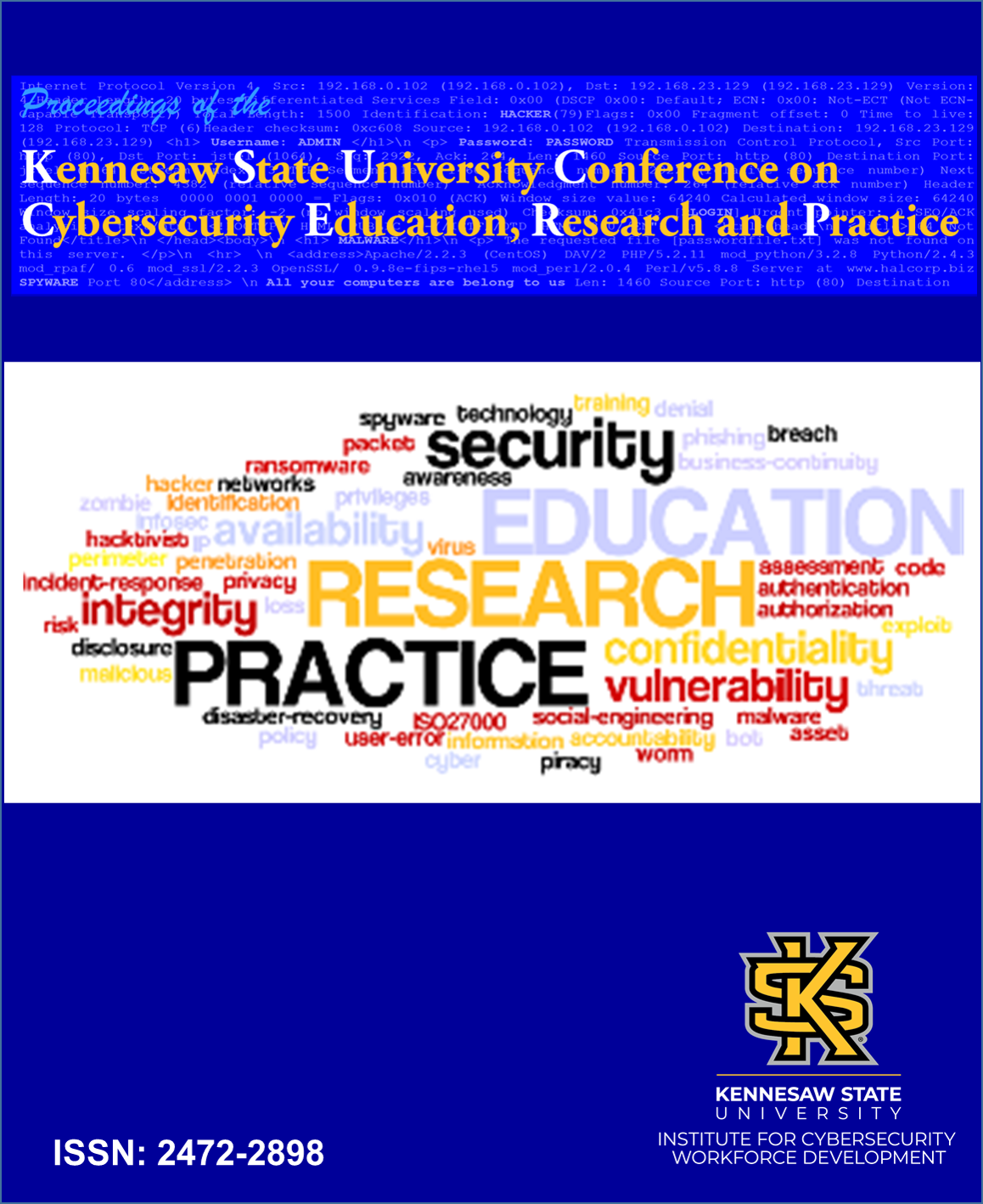Start Date
October 2018
End Date
October 2018
Location
KC 400
Abstract
The daily intrusion attempts and attacks on industrial control systems (ICS) and embedded systems (ES) underscore the criticality of the protection of our Critical Infrastructures (CIs). As recent as mid-July 2018, numerous reports on the infiltration of US utility control rooms by Russian hackers have been published. These successful infiltration and possible manipulation of the utility companies could easily translate to a devastating attack on our nation’s power grid and, consequently, our economy and well-being. Indeed, the need to secure the control and embedded systems which operate our CIs has never been so pronounced. In our attempt to address this critical need, we designed, developed and implemented ICS and ES security curriculum modules with pertinent hands-on laboratory exercises that can be freely adopted across the national setting. This paper describes in detail the modules and the accompanying exercises and proposes future enhancements and extensions to these pedagogical instruments. It highlights the interaction between control and embedded systems security with Presidential Policy Directive 8- the National Preparedness Plan (NPP), cyber risk management, incident handling. To establish the premise the laboratory exercises were developed. This paper outlines the description and content of the modules in the areas of (1) Industrial Control Systems (ICS) Security, (2) embedded systems (ES), and (3) guidelines, standards, and policy.
The ICS security modules cover the predominant ICS protocols, ladder logic programming, Human Machine Interface (HMI), defensive techniques, ICS reconnaissance, vulnerability assessment, Intrusion detection, and penetration testing. The ES security modules include topics such as secure firmware programming and authentication mechanisms. In the guidelines, standards, and policy section, the topics covered by the modules include the NPP as it relates to CI protection, risk management, system protection and policy design, and managing operations and controls. An overview of the various hands-on exercises that accompany the course modules is also presented. Further, to evaluate the effectiveness of the pedagogical materials, an initial evaluation was conducted and the survey data were collected, analyzed, and presented. The paper concludes with future enhancements and directives on opportunities for module extensions and course adoption.
Included in
Information Security Commons, Management Information Systems Commons, Technology and Innovation Commons
Laboratory Exercises to Accompany Industrial Control and Embedded Systems Security Curriculum Modules
KC 400
The daily intrusion attempts and attacks on industrial control systems (ICS) and embedded systems (ES) underscore the criticality of the protection of our Critical Infrastructures (CIs). As recent as mid-July 2018, numerous reports on the infiltration of US utility control rooms by Russian hackers have been published. These successful infiltration and possible manipulation of the utility companies could easily translate to a devastating attack on our nation’s power grid and, consequently, our economy and well-being. Indeed, the need to secure the control and embedded systems which operate our CIs has never been so pronounced. In our attempt to address this critical need, we designed, developed and implemented ICS and ES security curriculum modules with pertinent hands-on laboratory exercises that can be freely adopted across the national setting. This paper describes in detail the modules and the accompanying exercises and proposes future enhancements and extensions to these pedagogical instruments. It highlights the interaction between control and embedded systems security with Presidential Policy Directive 8- the National Preparedness Plan (NPP), cyber risk management, incident handling. To establish the premise the laboratory exercises were developed. This paper outlines the description and content of the modules in the areas of (1) Industrial Control Systems (ICS) Security, (2) embedded systems (ES), and (3) guidelines, standards, and policy.
The ICS security modules cover the predominant ICS protocols, ladder logic programming, Human Machine Interface (HMI), defensive techniques, ICS reconnaissance, vulnerability assessment, Intrusion detection, and penetration testing. The ES security modules include topics such as secure firmware programming and authentication mechanisms. In the guidelines, standards, and policy section, the topics covered by the modules include the NPP as it relates to CI protection, risk management, system protection and policy design, and managing operations and controls. An overview of the various hands-on exercises that accompany the course modules is also presented. Further, to evaluate the effectiveness of the pedagogical materials, an initial evaluation was conducted and the survey data were collected, analyzed, and presented. The paper concludes with future enhancements and directives on opportunities for module extensions and course adoption.


